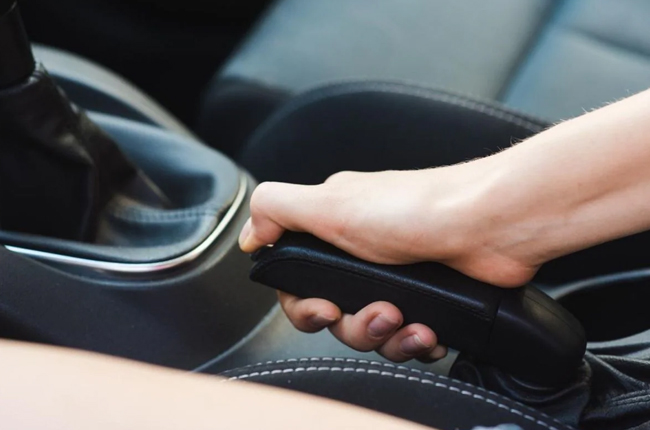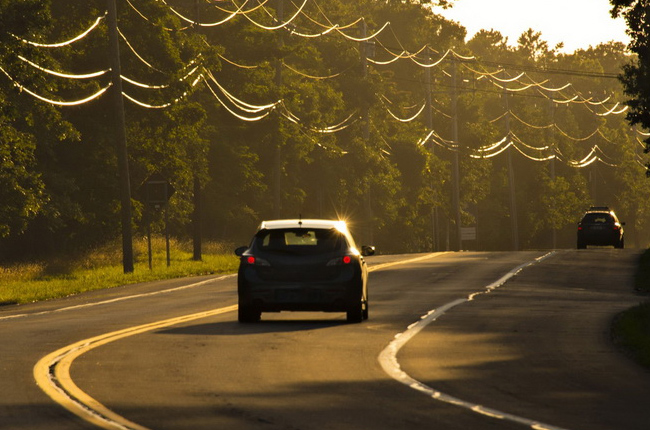
Manual vs. automatic, it’s an age-old debate. Manual transmission cars may seem less common nowadays, especially as automatics have taken the lead in convenience and ease—not to mention, the dawn of EVs and hybrids. However, manuals are still beloved by drivers who value the feeling of control they provide.
Unlike an automatic, a manual lets you fully control how the engine responds, and changing gears on your own can add excitement and satisfaction. In the end, it's a personal preference. So, if you’re one of those who prefer the classic feel of a stick shift, here are 5 things you should avoid doing to keep your car running smoothly and safely.
Resting your hands on the gear shifter

It might feel natural to rest your hand on the gear shifter when driving a manual, especially on long drives or while waiting for the next gear change. However, keeping one hand on the gear stick can actually create some risks. Both hands should ideally be on the steering wheel in the 9 and 3 o’clock positions for better control, especially in case you need to react quickly. With both hands on the wheel, you’re better equipped to steer, avoid hazards, or make precise turns.
Additionally, resting your hand on the gear shifter can put pressure on the transmission’s internal parts over time. When you press down on the shifter, even lightly, it applies slight pressure on the gear selector fork, which is made for shifting, not for carrying weight. Over time, this pressure can cause wear, leading to costly repairs in the transmission. So, try to keep your hands on the wheel and only touch the shifter when it’s time to change gears. The gear stick is meant for shifting, not as a hand rest, and using it this way can help your car’s parts last longer.
Clutch driving

If you have a habit of resting your foot on the clutch, it’s time to break it. Keeping your foot on the clutch wears down the clutch lining over time because it maintains contact with moving parts inside. Consistently resting your foot on the clutch can also lead to overheating, which reduces the clutch’s effectiveness and can make the car harder to control. To avoid wearing it out, make sure to lift your foot off the clutch entirely after shifting gears.
Not using the handbrakes

When stopped on an incline, avoid using the clutch to “hold” or “hang” your vehicle in place, since this can speed up wear on the clutch. Instead, use the handbrake to secure the car, apply the throttle, and slowly release the clutch while letting down the handbrake. In this way, you save your clutch and have better control on hills.
Using the handbrake on hills is also safer for your brakes, as it prevents you from having to “ride” the brakes while waiting on an incline. So, whenever you’re on a slope, remember to rely on the handbrake because it’ll help keep your clutch, brakes, and wallet in better shape.
Coasting in neutral

While it might seem like coasting in neutral will save fuel, this habit can actually reduce your control over the car and increase risks on the road. When you’re in neutral, your vehicle’s engine isn’t engaged with the wheels, which limits your ability to react quickly if you need to speed up or slow down. For example, if an obstacle or sudden stop comes up, you’d need extra time to shift back into gear before responding, which could make it harder to avoid an accident. Rolling downhill in neutral can put extra strain on your brakes, causing them to overheat. Use a lower gear instead and let the engine assist with braking.
Ignoring the RPM

RPM, or revolutions per minute, shows how fast the engine is spinning. Paying attention to RPM helps you know the best time to shift gears in a manual car. Each time you press the gas, the RPM rises, making the engine work harder. If you shift gears at the right RPM range, your car performs better, uses fuel more efficiently, and avoids unnecessary wear on the engine.
When driving a manual, you should not press hard on the gas pedal when the RPM is too low. Doing this can make the engine struggle, which stresses its parts and may lead to issues over time. Instead, if you notice the RPM is low and you need to speed up, it’s better to downshift. An ideal range for shifting in most cars is around 2,000 to 3,000 RPM for regular driving, but it can vary based on your car’s engine and the road conditions.
While automatic transmissions have become quicker, thanks to dual-clutch and other advanced systems, manual transmissions have a special place for many drivers. Most of the time, the reason for this is simply the driving pleasure. Driving a manual lets you feel more in control and provides that sense of involvement many drivers find rewarding. If you enjoy driving a manual, remember that good habits can make your driving safer and keep your car in better condition. For those looking for their next manual car, visit AutoDeal.com.ph or download the AutoDeal app on iOS and Android for a convenient shopping experience.
Latest Features
-
The difference between wax and polish / Tips & Advice
Confused about whether your car needs a wax or polish? This article will guide you on what they are and what to choose for your car.
-
The 6 things every Ford Ranger must pass before it leaves the factory / Featured Article
Every Ford Ranger, from the base model to the Ranger Raptor, goes through a full inspection process before it leaves the factory. This includes six steps that make sure it’s ready to drive a...
-
Which GAC AION EV is best for your everyday lifestyle? / Featured Article
The GAC AION lineup has something for everyone, maybe you're after space, speed, or just a smooth city drive. Here's a quick breakdown of which model might work best for your day-to-day life...
Popular Articles
-
Cheapest cars under P700,000 in the Philippines
Jerome Tresvalles · Sep 02, 2024
-
First car or next car, the Ford EcoSport is a tough package to beat
Jun 18, 2021
-
Car Maintenance checklist and guide – here’s everything you need to know
Earl Lee · Jan 12, 2021
-
Most fuel efficient family cars in the Philippines
Bryan Aaron Rivera · Nov 27, 2020
-
2021 Geely Okavango — Everything you need to know
Joey Deriquito · Nov 19, 2020
-
Family cars in the Philippines with the biggest trunks
Sep 20, 2023
-
Head to head: Toyota Rush vs. Suzuki XL7
Joey Deriquito · Oct 28, 2020
-
Why oil changes are important for your car
Earl Lee · Nov 10, 2020
-
2021 Kia Stonic — What you need to know about it
Joey Deriquito · Oct 16, 2020
-
Top 7 tips for buying a used car in the Philippines
Joey Deriquito · Nov 26, 2020




